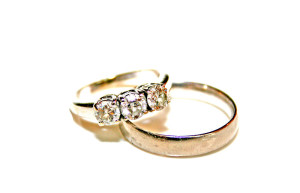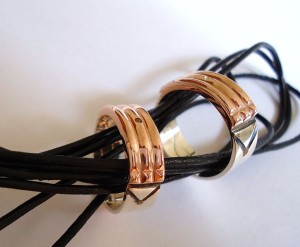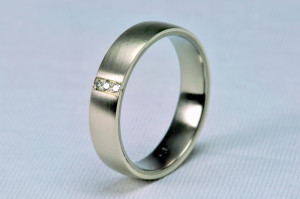If you are looking at engagement rings, wedding bands or fine watches you will have seen designs fashioned in many different precious metals. Here is a quick guide to the choices on offer and what qualities each metal offers.
Gold
The purity of gold is measured in carats. Pure gold is 24 carat but is too soft and malleable to be used in jewellery and so base metals are added to strengthen it. 18 carat gold is 18 parts gold and 6 parts other metals but although the purity is high the gold is still relatively soft and so will scratch and damage more easily than 9 carat gold which is only 9 parts gold and 15 parts base metal. Yellow gold is a traditional choice but its popularity is fading in favour of white metals.
White Gold
White gold is simply yellow gold to which nickel, palladium or manganese has been added. The purity is measured in carats as per yellow gold and this variety is a good choice if you are looking for a white metal but your budget does not stretch to Platinum. Nickel can cause an allergic reaction in some people which can leave rashes on the skin so if you are going for white gold enquire as to the chemical make-up of the metal.
Rose Gold
The gorgeous pink tones of rose gold are created by the addition of copper. The more copper the more red the metal becomes. This shade of gold is becoming very popular, particularly in high-end watches, and can be combined with yellow or white gold in pieces of jewellery to create multi-coloured designs.
Platinum
Platinum is a white metal which is one of the rarest elements on earth and is well suited to use in jewellery being highly resistant to wear and corrosion. Its rarity makes it a more expensive choice than gold but it is more durable. Luxury watch makers often use platinum for their limited edition pieces.
Titanium
This material has the highest strength to weight ratio of any metal and is highly resistant to corrosion and denting. It is a durable and lightweight white metal and is thus a great choice for your piece of jewellery. It is favoured in the manufacture of watch cases being resistant to almost all damage. Titanium can be anodised to produce a variety of different colours. Such is titanium’s strength it can be added to gold to produce a metal which is almost pure gold but with the strength of 14 carat gold.
Choices
Your choice of precious metal will be dictated by your colour preference, budget and need for durability. Whichever you choose you will have a beautiful piece of jewellery to treasure.
Byline
Article by Sally Stacey, bridal shop owner and wedding planner.



